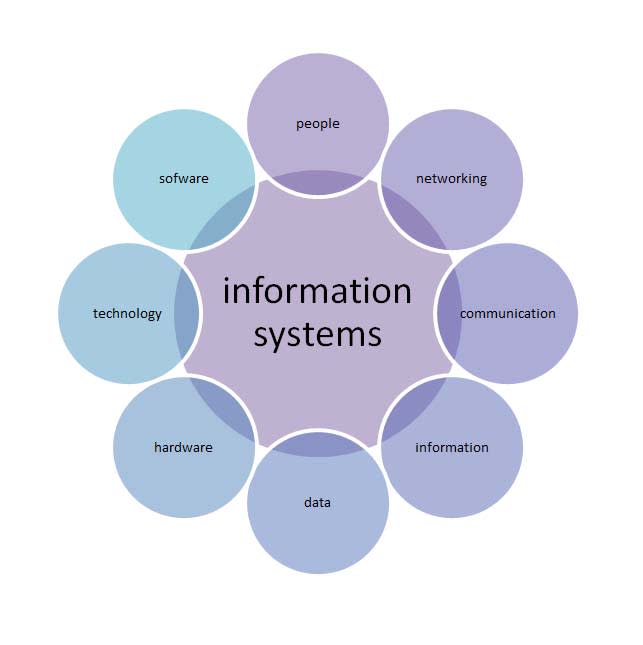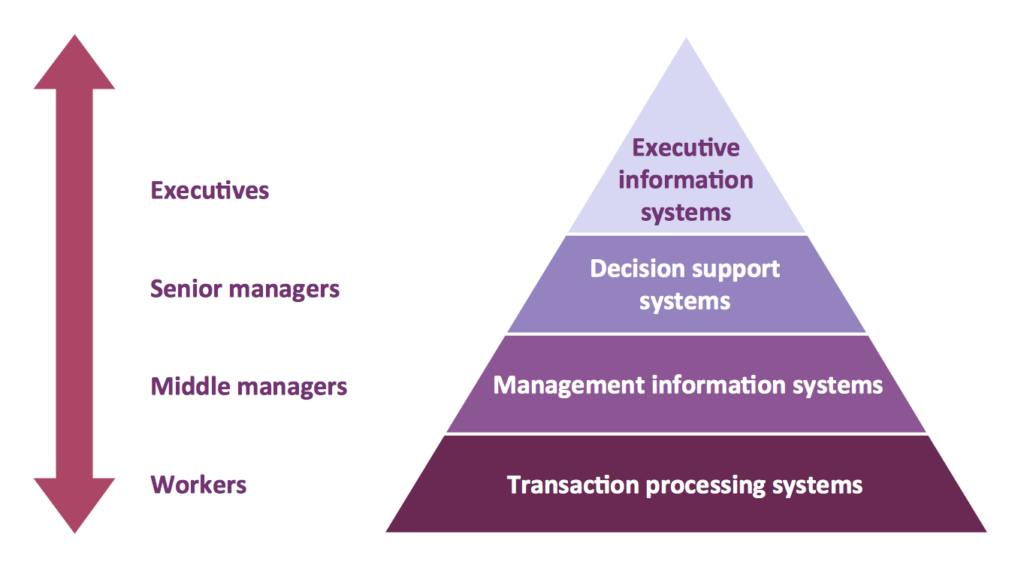
Introduction to Information Systems Management
Information Systems Management refers to the process of managing the technology, people, and processes involved in effectively using information systems within an organization. It involves the planning, organizing, and controlling of these resources to ensure that they are aligned with the goals and objectives of the organization. In today’s business landscape, where technology plays a crucial role in driving success, Information Systems Management has become increasingly important.
The importance of Information Systems Management lies in its ability to help organizations leverage technology to gain a competitive advantage. It allows businesses to streamline operations, improve decision-making processes, enhance communication and collaboration, and ultimately drive innovation. By effectively managing their information systems, organizations can optimize their processes, reduce costs, and improve overall efficiency.
Importance of Effective Information Systems Management
Effective Information Systems Management brings numerous benefits to organizations. Firstly, it enables organizations to make better-informed decisions by providing accurate and timely information. With the correct information at their fingertips, managers can analyze data, identify trends, and make strategic decisions that drive business growth.
Secondly, effective Information Systems Management ensures that organizations are able to adapt to changing market conditions and customer demands. By aligning their information systems with their business goals, organizations can quickly respond to market changes, launch new products or services, and stay ahead of the competition.
On the other hand, poor Information Systems Management can have severe consequences for organizations. It can lead to data breaches and security breaches, resulting in financial losses and damage to the organization’s reputation. It can also lead to inefficiencies and operational disruptions, which can hinder productivity and customer satisfaction.
Strategy 1: Aligning Information Systems with Business Goals
To achieve effective Information Systems Management, organizations need to align their information systems with their business goals. This involves understanding the goals and objectives of the organization and ensuring that the information systems are designed and implemented in a way that supports these goals.
By aligning information systems with business goals, organizations can ensure that their technology investments are strategic and focused. They can prioritize projects and initiatives that directly contribute to achieving their goals and avoid wasting resources on projects that do not align with their strategic objectives.
Aligning information systems with business goals also enables organizations to measure the impact of their technology investments. By setting clear metrics and performance indicators, organizations can track the effectiveness of their information systems and make data-driven decisions to improve their performance.
Strategy 2: Implementing Robust Security Measures
Information Systems Security is a critical aspect of effective Information Systems Management. With the increasing threat of cyberattacks and data breaches, organizations must implement robust security measures to protect their information systems and data.
There are various types of Information Systems Security measures that organizations can implement. These include network security, which involves securing the organization’s network infrastructure and preventing unauthorized access; data security, which involves protecting sensitive data from unauthorized access, loss, or corruption; and application security, which involves securing the organization’s software applications and preventing vulnerabilities.
To implement robust security measures, organizations should follow best practices such as regularly updating software and systems, implementing strong passwords and authentication mechanisms, conducting regular security audits and assessments, and providing ongoing security training to employees.
Strategy 3: Ensuring Data Quality and Integrity
Data Quality and Integrity are crucial for effective Information Systems Management. Organizations rely on accurate and reliable data to make informed decisions, drive business processes, and deliver customer value.
Ensuring Data Quality and Integrity involves implementing processes and controls to prevent data errors, inconsistencies, and inaccuracies. This includes data validation, which involves checking the accuracy and completeness of data before it is entered into the system; data cleansing, which involves identifying and correcting errors or inconsistencies in the data; and data governance, which involves establishing policies and procedures for managing data throughout its lifecycle.
Poor Data Quality and Integrity can have serious consequences for organizations. It can lead to incorrect decisions, inefficient processes, and loss of customer trust. Therefore, organizations should implement best practices such as data validation checks, data cleansing processes, and data governance frameworks to ensure the quality and integrity of their data.
Strategy 4: Investing in Training and Development
Investing in Training and Development is essential for effective Information Systems Management. Technology is constantly evolving, and organizations need to ensure that their employees have the necessary skills and knowledge to effectively use and manage information systems.
Training and Development can take various forms, including technical training on specific software applications or systems, leadership training to develop managerial skills, and cybersecurity training to enhance security awareness and prevent cyber threats.
By investing in Training and Development, organizations can improve employee productivity, enhance job satisfaction, and attract and retain top talent. It also enables organizations to stay up-to-date with the latest technology trends and innovations, ensuring that they can leverage technology to drive business growth.
Strategy 5: Embracing Emerging Technologies
Embracing Emerging Technologies is another key strategy for effective Information Systems Management. Emerging technologies such as artificial intelligence, blockchain, and Internet of Things have the potential to transform business processes and create new opportunities for organizations.
By embracing Emerging Technologies, organizations can gain a competitive advantage by improving efficiency, enhancing customer experience, and driving innovation. For example, artificial intelligence can automate repetitive tasks and enable organizations to make data-driven decisions; blockchain can provide secure and transparent transactions; and Internet of Things can enable organizations to collect and analyze real-time data for better decision-making.
To embrace Emerging Technologies, organizations should stay informed about the latest trends and developments in technology, conduct pilot projects to test the feasibility and effectiveness of new technologies, and collaborate with technology partners and experts to leverage their expertise.
Best Practices for Information Systems Management
To achieve effective Information Systems Management, organizations should follow best practices. Best practices are proven methods or techniques that have been identified as the most effective way to achieve a desired outcome.
Some examples of best practices for Information Systems Management include:
– Developing a comprehensive IT strategy that aligns with the organization’s business goals and objectives.
– Establishing clear roles and responsibilities for managing information systems and ensuring accountability.
– Regularly monitoring and evaluating information system performance to identify improvement areas.
– Implementing a robust change management process to ensure smooth transitions and minimize disruptions.
– Establishing solid relationships with technology vendors and partners to leverage their expertise and resources.
Following best practices is essential because it allows organizations to learn from the experiences of others and avoid common pitfalls. It also ensures that organizations use the most effective methods and techniques to achieve their goals.
Common Challenges and How to Overcome Them
While effective Information Systems Management brings numerous benefits, it also comes with its own set of challenges. Some common challenges include:
– Resistance to change: Employees may resist changes to their existing processes or systems, which can hinder the implementation of new information systems. To overcome this challenge, organizations should communicate the benefits of the changes, involve employees in the decision-making process, and provide training and support to help them adapt.
– Lack of resources: Implementing and managing information systems requires financial resources, skilled personnel, and infrastructure. To overcome this challenge, organizations should prioritize their investments, seek external funding or partnerships, and optimize their existing resources.
– Security threats: Information systems are vulnerable to cyberattacks and data breaches, which can have severe consequences for organizations. To overcome this challenge, organizations should implement robust security measures, regularly update their systems and software, and provide ongoing security training to employees.
– Data quality issues: Ensuring the quality and integrity of data is a constant challenge for organizations. To overcome this challenge, organizations should implement data validation checks, data cleansing processes, and data governance frameworks.
Conclusion: Achieving Success through Effective Information Systems Management
In conclusion, effective Information Systems Management is crucial for organizations to thrive in today’s business landscape. By aligning information systems with business goals, implementing robust security measures, ensuring data quality and integrity, investing in training and development, and embracing emerging technologies, organizations can optimize their processes, improve decision-making, and drive innovation.
To achieve success through effective Information Systems Management, organizations should follow best practices, overcome common challenges, and continuously adapt to the changing technology landscape. By doing so, organizations can leverage technology to gain a competitive advantage, drive business growth, and deliver customer value.





